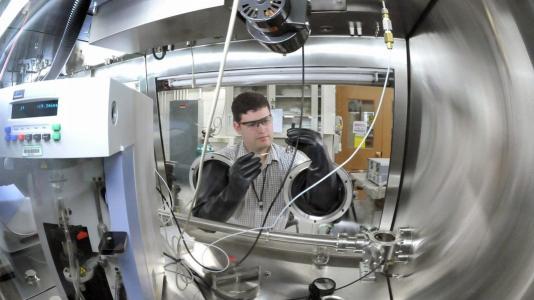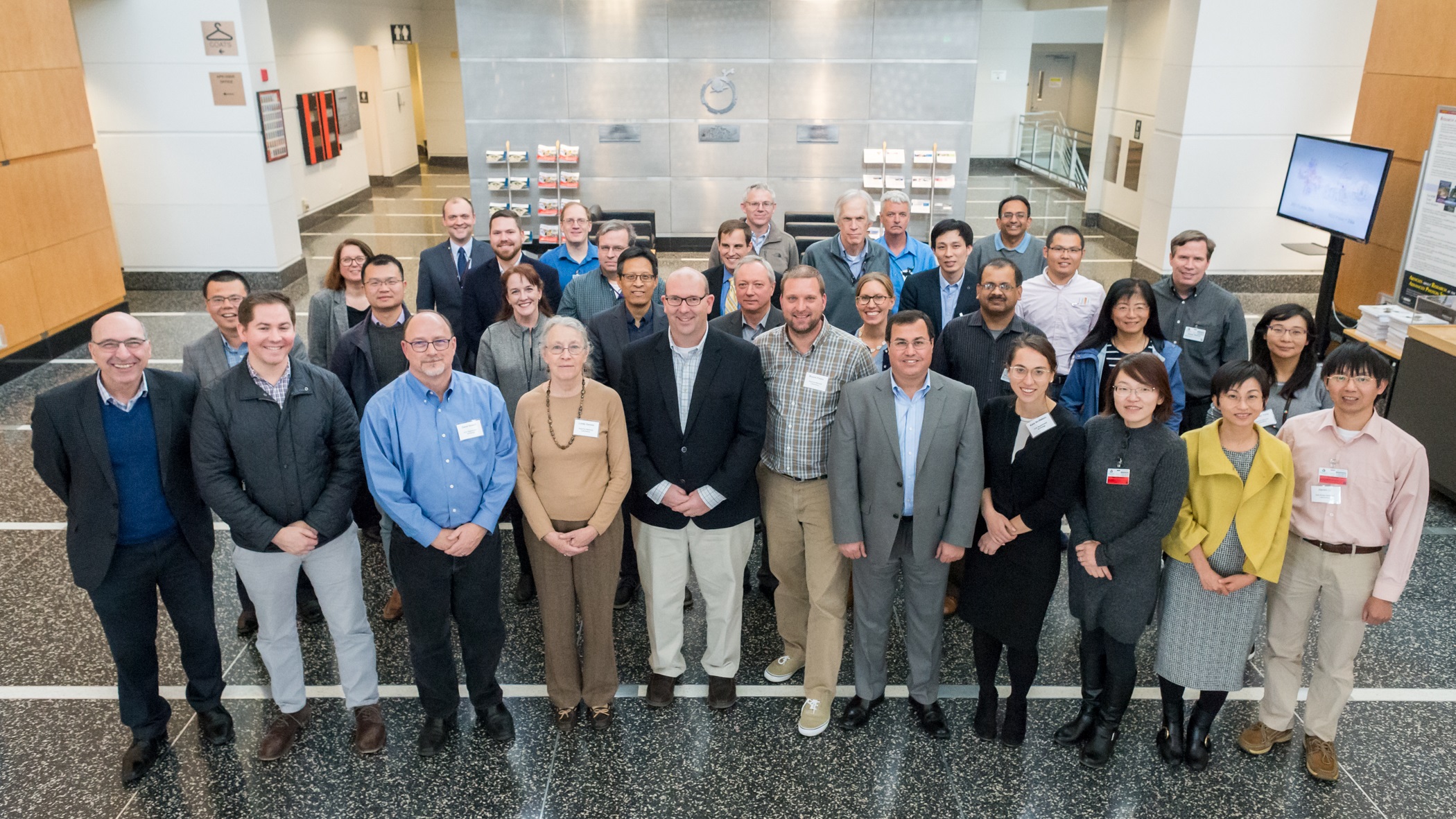ReCell Center could save costly nickel and cobalt, transform battery recycling worldwide

The growing number of electric vehicles on U.S. roads poses a question: What will happen when those cars go out of service? Without recycling, their batteries may become 8 million tons of global scrap by 2040.
Yet those end-of-life lithium-ion batteries are an important resource. They contain viable and valuable materials that can — and should — be recovered.
To address this challenge, the U.S. Department of Energy (DOE) launched the ReCell Center in February 2019. The $5 million per year center, which is funded by DOE’s Office of Energy Efficiency and Renewable Energy, Vehicle Technologies Office, is leading the way to make pivotal discoveries in cost effective lithium-ion battery recycling so valuable battery components such as cobalt and nickel compounds don’t go to waste.
ReCell is a collaboration between DOE’s Argonne National Laboratory, which leads the initiative, National Renewable Energy Laboratory (NREL), Oak Ridge National Laboratory (ORNL), as well as Worcester Polytechnic Institute, University of California at San Diego and Michigan Technological University.
The ReCell mission is to help grow a globally competitive U.S. recycling industry. Accelerating lithium-ion battery recycling will ultimately bring down the cost of electric vehicle batteries for consumers and reduce our reliance on foreign sources of these materials.
Since ReCell’s inception, we have made pivotal discoveries in each of ReCell’s four focus areas: direct cathode recycling, recovering other materials, design for recycling, and modeling and analysis.
Taking the direct approach to cathode recycling
The manufacturing costs for a vehicle battery can be 5% to 30% lower when using recycled cathode material, which stores lithium ions and releases them when a battery charges. But current recycling methods only produce metal salts that then need to be reprocessed back into battery materials. The value of these materials is too low for recycling to be commercially feasible in the U.S.
Direct cathode recycling, on the other hand, maintains the material as a cathode, retaining its original value. But the variety of ingredients and evolving chemistry of today’s batteries introduce technical hurdles. In ReCell’s first year, we focused our efforts on this important piece of the puzzle, testing at least nine basic direct recycling concepts. These include successful removal of the battery’s binder, which holds active materials together; and new methods for restoring the lithium content of degraded cathode materials.
Recovering other battery materials
We are also pursuing projects to recover other battery materials, such as lithium salts and electrolyte solvents, to maximize the number of reusable components and provide more revenue for recyclers. An important advance from researchers at Oak Ridge National Laboratory enables recovery of clean “black mass,” the mix of cathode and anode powders left after battery cells, or single units, have been shredded. They identified solvents that can quickly separate active material from the collector foil — i.e., copper or aluminum that acts as an electrical conductor and mechanical support — making it available for further processing.
Designing with recycling in mind
One way to help reduce the demand for battery materials is to make sure we design cells to be recycled in the first place. We are looking into feasible options and working to identify cell designs that would extend lifetimes far beyond the current 10-year average. Hitting this goal would reduce demand for replacements and, in turn, the materials needed to make them. For example, we are starting to configure new cells that could enable an electrode “rinsing” process to rejuvenate a cell and allow it to run longer.
Evaluating supply and demand
All of these technical areas are critical to building a new battery recycling economy, but we also need to ensure the processes are economically viable and environmentally sound. How much will they cost? How much energy and water will they use? What kind of revenue can they generate?
We have developed computer-based models that can help answer such questions and evaluate different technologies on the road from lab to commercial facility. Argonne’s EverBatt model, for example, allows us to compare the costs and impact of individual processes over the entire lifetime of a battery in order to identify the most promising options. Meanwhile, the National Renewable Energy Laboratory has begun to put battery material supply and demand in a global context with a model, named Lithium-ion Battery Recycling Analysis (LIBRA).
Leading global collaborations
Along the way, ReCell is fostering collaboration with industry to advance these technologies. Last fall, we met with more than 130 attendees from industry, government and academia. We also recently began our first industry-sponsored project with the Responsible Battery Coalition to develop battery recycling best practices.
Expanded facilities, greater impact
In ReCell’s first year, we focused on pinpointing the most promising battery recycling technologies. Now we’re expanding the ReCell facilities at Argonne. A laboratory that will house scale-up equipment, along with a bench-scale pilot laboratory for ReCell work, is opening this summer within the Materials Engineering Research Facility. This laboratory will give us access to the experts, equipment, and characterization tools needed to achieve our mission.
By 2022 at ReCell, we hope to demonstrate direct recycling from old cell to new, positioning us for pilot-scale demonstrations that can translate to commercial adoption. What we’re learning at ReCell will help lower battery costs for consumers and increase national energy security.
The Office of Energy Efficiency and Renewable Energy’s (EERE) mission is to accelerate the research, development, demonstration, and deployment of technologies and solutions to equitably transition America to net-zero greenhouse gas emissions economy-wide by no later than 2050, and ensure the clean energy economy benefits all Americans, creating good paying jobs for the American people — especially workers and communities impacted by the energy transition and those historically underserved by the energy system and overburdened by pollution.
Argonne National Laboratory seeks solutions to pressing national problems in science and technology by conducting leading-edge basic and applied research in virtually every scientific discipline. Argonne is managed by UChicago Argonne, LLC for the U.S. Department of Energy’s Office of Science.
The U.S. Department of Energy’s Office of Science is the single largest supporter of basic research in the physical sciences in the United States and is working to address some of the most pressing challenges of our time. For more information, visit https://energy.gov/science.
